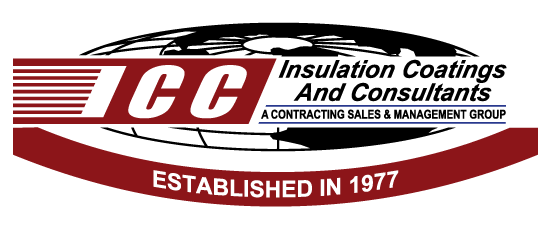|







   


 
 |
|

Key Features of Spray-On Insulation
Spray-On Insulation is a Seamless Monolithic Membrane
Spray-on insulation forms a seamless monolithic barrier virtually
impervious to air and is resistant to moisture penetration. It's
performance significantly increases the net system "R" value as compared
with traditional mineral fiber and fiberglass batt applications.
According to the ASHRAE 1985 Fundamentals Handbook, Section 20, batt and
rigid type insulations are not impervious to air infiltration with the
air movement on each side of insulation creating an air interchange
condition which increases the wall system's total heat loss as much as
60%. Batt type applications are unable to compete with wall spray's
proven membrane properties. Moisture is a primary reducer of insulation
"R" values. Despite our best efforts, wall insulating systems have the
potential to become wet both during construction and after. Fortunately,
wall spray's insulating performance when wet greatly exceeds other
insulating system and its unique wicking properties allow the material
to completely dry, restoring its original "R" value even in closed
curtain wall environments.
Decreased Wall Sound Transmission
Because wall spray-on insulation applications provide a seamless
monolithic barrier the wall system's resistance to sound or its STC
rating increased.
Savings - Savings - Savings
Wall spray-on insulation costs less to install. Both labor and material
components are reduced by as much as 30% when compared to curtain wall
batts. In today's large structures, this savings can be substantial.
Additionally, wall spray's superior insulating properties can reduce
mechanical system capacities by as much as 35% and reduce energy costs
by as much as 50%.
It's Safe
Spray-on insulation is odorless, nontoxic, non-corrosive, and does not
contain asbestos or fiberglass. Spray-on insulation is U.L. Listed Class
1 and can be used in 1, 2, and 3 hour fire rated assemblies. In both
load bearing and non-load bearing interior and exterior walls, the wall
structure must provide the fire resistance necessary to withstand the
ASTM E-119 procedure for the required duration (1, 2, or more hours).
When placed within tested wall cavities, wall spray products will not
reduce the fire resistance of the wall assembly and may in fact increase
it. Additionally, wall spray insulations meet or exceed the following
tests and/or safety requirements:
ASTM E-119 Fire Wall Test
ASTM E-84 Surface Burning Characteristics
CPSC Safety Act of 1978, as Amended in 1979
Conclusion
Wall spray-on insulations have been used in many exterior and spandrel
panel low, mid, and high-rise construction projects throughout the U.S.
The high thermal performance, ease, and speed of application along with
the monolithic coating make this product ideally suited for this use.
|